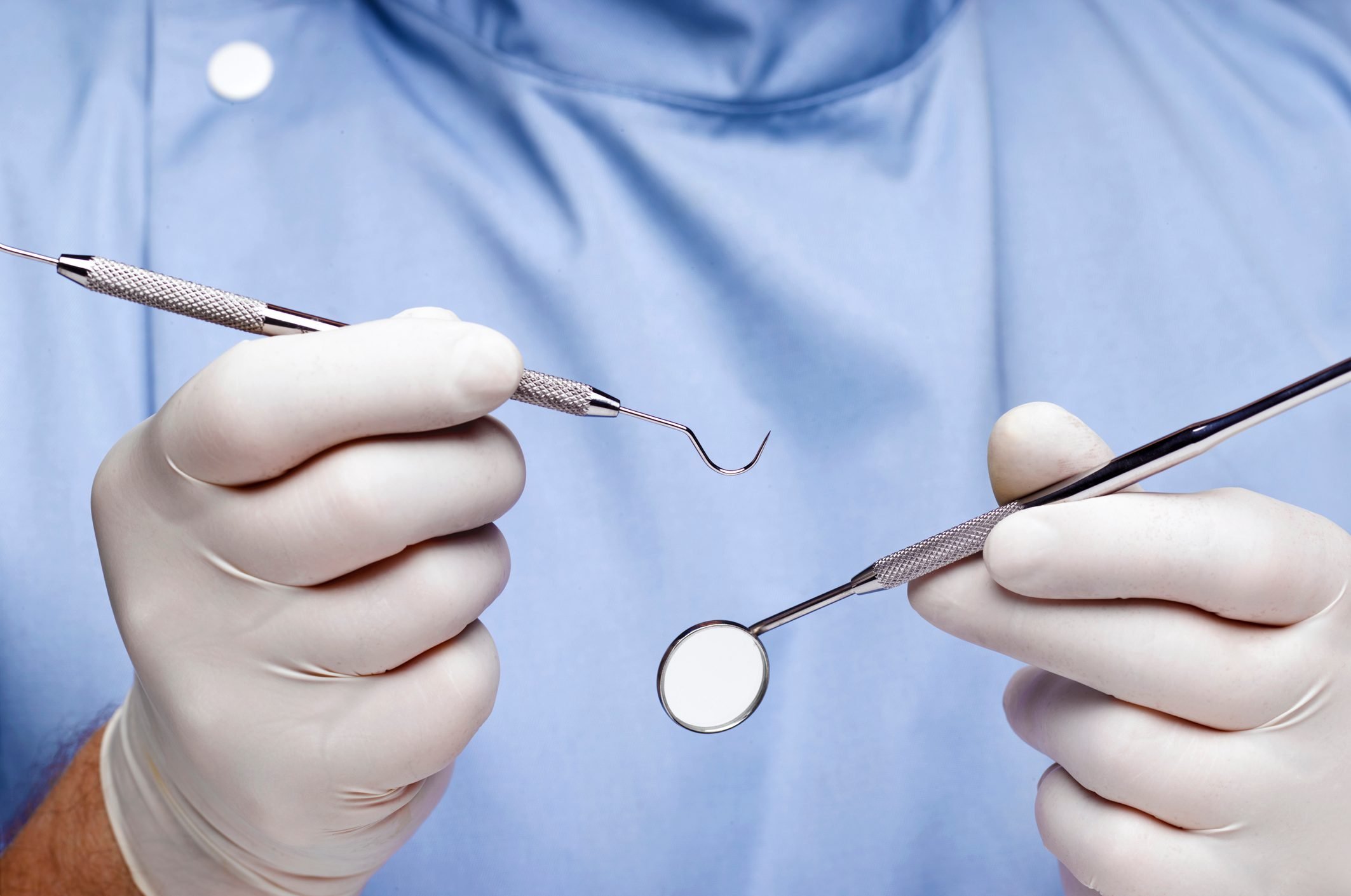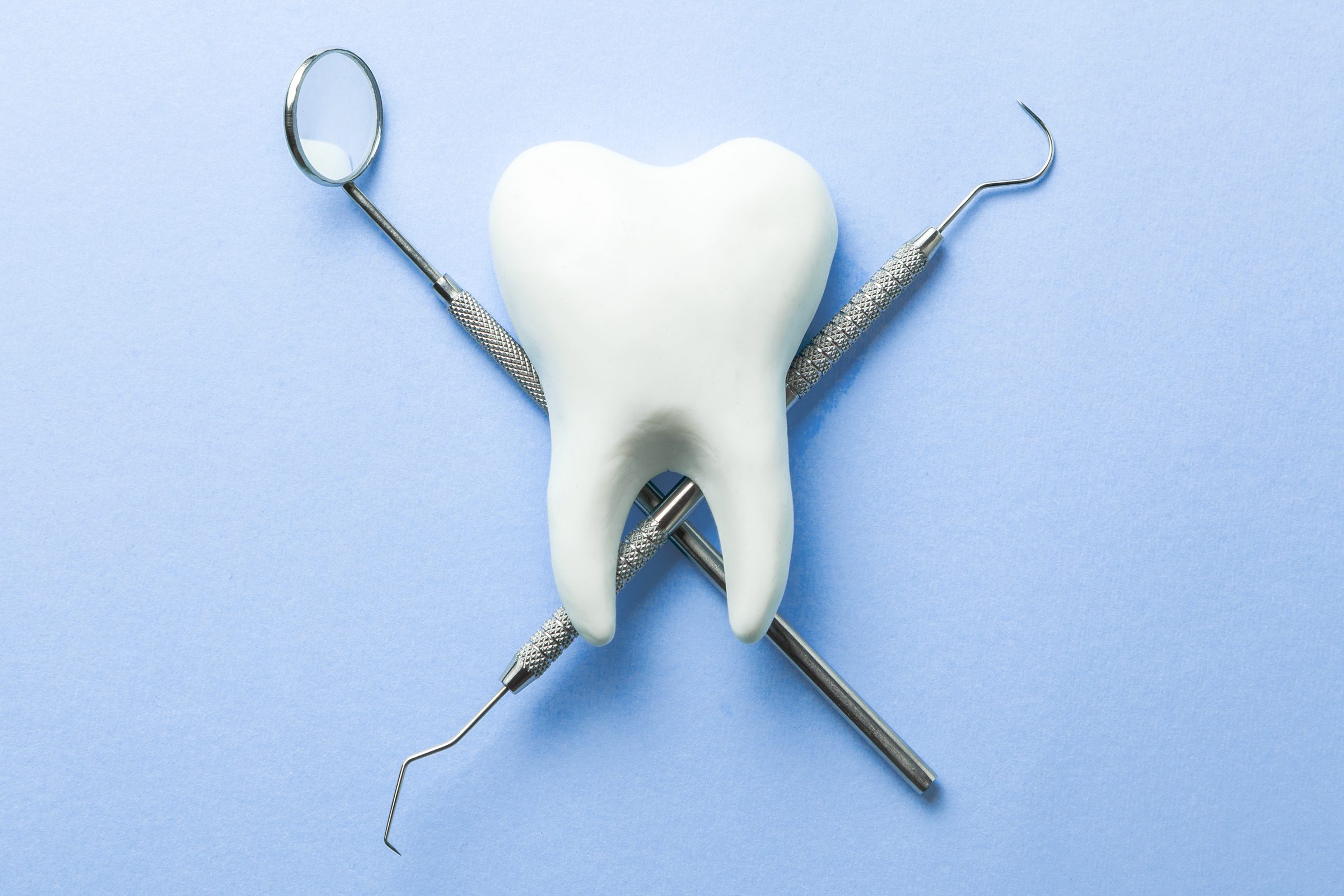From one dentist I got a quote of $460 for all of the work I needed to be done. From another, $29,850.

I Went to 50 Different Dentists and Almost All of Them Gave Me a Different Diagnosis

From behind a door comes the whine of a highspeed drill. When my name is called, I am ushered into an examining room and welcomed with a nutcracker handshake by the dentist, a graying at the temples man.
Soon I am staring toward the white cork ceiling while my teeth are probed, poked, tapped, and tugged. The numbers of my teeth are called out to an assistant, who jots the information on a chart: “No. 11, crown; No. 13, MOD; No. 14, MO… ” A few minutes later comes the verdict: I need 11 crowns, plus other work. It will cost $8,347.
“Do this and you will have no worries about your teeth for the next 30 years, ” the dentist purrs. Somehow I doubt that. Then he adds, “You and I are going to become great friends.”
Somehow I doubt that too. I was there in Dayton, Ohio, as part of an assessment of the consistency and fairness of American dentistry. Since Americans spend about $42 billion a year on their teeth, it seemed like a reasonable assignment: visit 50 dentists, show them your teeth and a set of X-rays, and ask each what needs to be done.
Four months, 50,000 miles, and 50 exams later, I concluded that going to the dentist is nothing to smile about. Dentistry is a stunningly inexact science. Even expecting that different dentists would have different, yet valid, opinions did not prepare me for the astounding variation in diagnoses I received. Some wanted only $500 to bring me up to good dental health. Others wanted ten, 20, even 50 times that amount. Surely they could not all be right.
I randomly selected the dentists from the Yellow Pages in 28 states and the District of Columbia. At each of the offices, I told the same story: I was moving to the area and wanted to become a patient; I had recently come through successful gum surgery; my dental expenses were covered through a direct reimbursement program with my employer; I was interested in maintaining good oral health and was satisfied with the appearance of my teeth. Because I said I was in a direct reimbursement program, I got a written treatment plan and a cost estimate from each dentist.
Before embarking on my journey, I went to the Lebanon Pa., office of Warren Daugherty my personal dentist for the past 15 years, and a man I trust. “You look really good,” he said after examining me and my X-rays, “but I want to put a crown on No. 30. ”
“Roughly how much money are we talking about?” I asked.
“Under $500. ”
I asked several other dentists, who had no financial interest in my teeth, to assess their condition so that I would have a basis for comparison with what I found on the road. Joining Daugherty on my panel were Dr. John Mayes of Hershey, Pa., a fellow of the Academy of General Dentistry, who took the X rays; Dr. John Dodes of Woodhaven, N.Y., a practicing dentist and the dental expert for the National Council Against Health Fraud; and Dr. Alvin Morris of Pawley’s Island, S. C., the former dean of the University of Kentucky’s College of Dentistry and recipient of the Distinguished Service Award from the American Dental Association in 1985.
All agreed that my oral health was good and I had only one immediate problem, the No. 30 tooth, a molar that needed a cap or a filling. Each panelist said there was room for disagreement on tooth No. 18, but that the total should not exceed $1,500 if two crowns were recommended.
I began my odyssey in Madison, Wis., where my grave-faced examiner informed me that I needed five teeth crowned, including No. 30, plus additional work. The estimated cost was $3,110.
The next day I visited Davenport, Iowa, where the verdict was the same: five crowns. But one tooth was different from those singled out in Madison. The cost was a little lower: $2,555. Then this dentist volunteered, “Your dental work is lousy.”
In Moline, Il., however, I received reassuring news: “Whoever’s been working on your mouth really knows his stuff. ”
Dr. Pacit a Pumilia in Rockford, Il., agreed that I needed only No. 30 crowned. But in Dayton, Ohio, a dentist wanted to crown six teeth—Nos. 6 through 11 in the upper front—for cosmetic improvements. Moreover, he missed No. 30 entirely.
Americans’ dental health has improved dramatically since 1945, the year cavity-fighting fluoride was first added to local water supplies. Traditional dental practice—drill, fill, and bill—has fallen off dramatically. According to the National Institute of Dental Research, the number of children with cavities in their permanent teeth dropped by more than half between the early 1970s and early 1990s. Meanwhile, the population of dentists has grown by 50 percent.
“The decline in the incidence of cavities has led to increased competition among dentists, ” says Dr. Dodes. “Dentists, in turn, are seeking ever more ways to make money from their patients.” His role with the National Council Against Health Fraud is to help protect patients against overcharging, overtreatment, and outright quackery.
In Indianapolis, the practitioner said through his blue mask, “I want to take some pictures of your mouth. These are not X-rays. It’s an intra-oral camera.”
He placed a wandlike device in my mouth, which sent an image to the chairside television monitor and gave me a fullscreen view of my mouth in living color. He took four photographs. “These pictures are so we can show you where the problems are,” he explained. “You can take them home with you.”
There was no charge for the photographs. Later I learned why: the camera is considered a selling device for dentists and manufacturers claim it will pay for itself in a few months in the form of additional work. “Patients need to be sold TWICE—in the office and when they get home,” goes one bit of sales advice.
I was handed two estimates. One was for “necessities”: four crowns, not including No. 30, at a cost of $2,617. A separate listing for cosmetic work came to $8,665. The total: $11,282.
“If it’s covered, you may as well get the whole job so it’s done right,” my examiner said, lowering his voice.

It is an attitude I encountered a dozen times. Under the direct reimbursement program I claimed to be in, my employer would pay claims directly from an established company fund. Dentists like direct reimbursement because they get paid quickly and there is no third party, such as an insurance company, questioning their work.
In Philadelphia, I was told: “Tell me what your insurance limits are, and we’ll proceed from there.”
Heading south, I hit one comforting practitioner in Marion, Ark., Dr. Henry Wah, who recommended $700 worth of work. Just a few miles away, in Memphis, Tenn., my examiner said I could squeak by with a barebones approach, “with absolutely no guarantees for the future, ” at a cost of $5,000. But what I really ought to do, he said, would be to crown all 28 teeth. (My four wisdom teeth have been extracted. ) Total cost : $13,440. He could, he assured me, do most of the job in a single day—with a 10 percent discount if I paid cash on that day.
In Salt Lake City, the dentist informed me solemnly, “You need a full-mouth reconstruction. ” Cost: $19,402. Nothing, I thought, could top this. Alas, I was wrong.
At a dental school, I heard about a newsletter, The Profitable Dentist, and became a subscriber. From this newsletter, I discovered that there’s a whole business devoted to telling dentists how to build up the “million dollar practice.” Dentists are flocking to courses on how to generate more profits by maximizing the use of hygienists, extending credit, stepping up collection practices, and persuading patients to accept expensive restoration work instead of fillings.
Not that dentists are near the poverty line. According to the American Dental Association (ADA), the average income for dentists in private practice for 1994, the last year for which figures are available, was $117,610.
Unfortunately, high fees and quality dentistry don’t always go hand in hand. Indeed, 15 of the 50 dentists who examined me missed my problem No. 30 entirely. And three of those dentists assured me that I had no problems whatsoever.
A good example of the inconsistencies I encountered was on the issue of jagged edges, also called margins. These are tiny spaces between the crown and the tooth surface, and in my case, they were exposed as a result of gum surgery.
Above downtown Seattle in a highrise overlooking Puget Sound, the dentist had a 15-minute look in my mouth, and when done he was somber. “Some of your crowns have jagged edges and need immediate attention. They will trap food and cause decay.” He wanted to do 17 crowns—though he missed No. 30—and other work at a cost of $13,774.
A few weeks after the urgency in Seattle, I was in Cambridge, Mass. “The downside of gum surgery is that you have a lot of exposed roots,” the dentist said. “It’s not necessary to change all the crowns if you keep them clean and practice a good daily routine.” She recommended one crown and four fillings at a cost of $1,220. In Washington, D. C., the margins were a $5,275 problem. They were not a problem in Cody, Wyo., and Lahaina, Hawaii. They were a problem in Albuquerque and Omaha.
The panelists? None of them thought the margins posed an immediate threat to my dental health.
There were signs of consistency and fairness in American dentistry. In a humble office in Burlington, Vt., I was checked thoroughly by Dr. David Blanck. The exam included an oral cancer and periodontal screening and a request to consult with my home periodontist. (My panel says all three should be part of a proper new patient exam.) He was among a dozen practitioners whose treatment plans were substantially the recommendations of my panel.
However, only nine of the 50 wanted to consult with the periodontist who performed my gum surgery; only 21 conducted the ADA recommended oral cancer screening, and only 14 did the ADA recommended periodontal screening. The cost of my exams ranged from $20 to $141, and the cost of a porcelain crown ranged from $329 to $1,150.
My final stop was on Park Avenue in New York City, a stone’s throw from Grand Central Terminal. A revolving door chopped rush hour crowds into people. Smooth as mercury, an elevator whisked me up the highrise, where I entered an impressive office—handsome furniture, art on the walls, oriental carpets on hardwood floors. Baroque music wafted from invisible speakers. The dentist was a trim, athletic man, and as he examined my teeth, he shook his head in displeasure. Finally, he sighed and invited me to a private conference room.
“The news is not good, and you’re lucky you have insurance,” he said. He handed me a treatment plan that said I needed 21 crowns and veneer on six lower front teeth.
It would cost $29,850.
I decided to get one extra exam. This one wouldn’t be from a dentist in private practice but from a dental school student whose principal impetus would be to get it right rather than to get rich. A week later I was sitting in the clinic of the Creighton University School of Dentistry in Omaha. My examiner was Larry Tran, a 25-year-old Californian in his third year of the four-year program. He did the oral cancer exam, the periodontal screening, and checked my bite. Then he proceeded, slowly, painstakingly. After about 30 minutes, he said: “You’re in good shape. You need a crown on No. 30, and I’d like to crown No. 18. The cost will be $460. Now I need to find my instructor. ”
A minute later he was back with Dr. John Thurmond, the chairman of oral diagnosis and radiology, who also examined me. “You got it right,” he said to Tran.
I asked the American Dental Association how the dentists I saw could draw such different conclusions from the same set of facts. They put me in touch with Dr. Leslie Seldin, a New York dentist and a consumer adviser for the ADA. He said he was not surprised by the inconsistencies. “Dentistry is an art based on scientific knowledge, and what’s most important to all of us is that we each use our professional judgment to design what we believe is the best solution for the patient.” But Dr. Morris, the former dean, said my findings are “disturbing” and notes that guidelines are needed to assist dentists in providing quality care. “Some doctors say we don’t need standards in dentistry because they already exist for who gets into dental school, who graduates, and who is admitted to practice. The problem with most measures, however, is they inevitably reach a minimally acceptable level, requiring not that one be good but that one not be bad. ”
The ADA recently developed a set of nonbinding treatment parameters. My panel’s Dr. Dodes calls them “mostly nebulous generalities that do little to guarantee patients adequate treatment.”
What, then, can Americans do to protect themselves from overtreatment and overcharging? Says the ADA’s Dr. Seldin, “We encourage patients to seek out—certainly if there’s a lot of work to be done—second or third opinions so they can have comfort with the practitioner’s recommendations.”
I got 50 opinions, and I am not comforted.
This article originally ran in the February 1997 issue of Reader’s Digest.




















